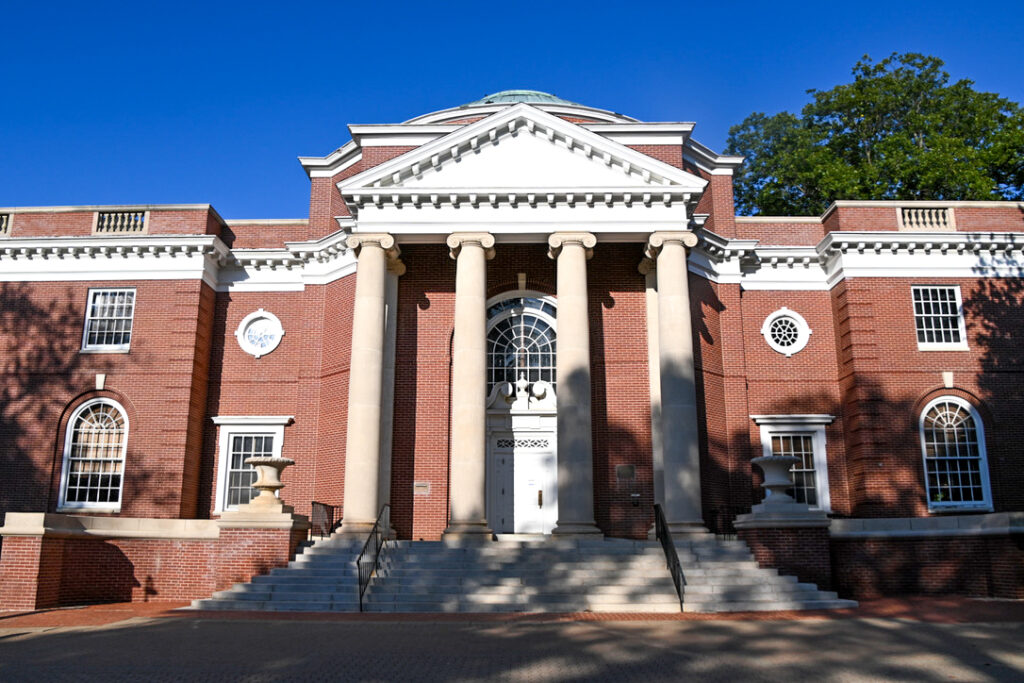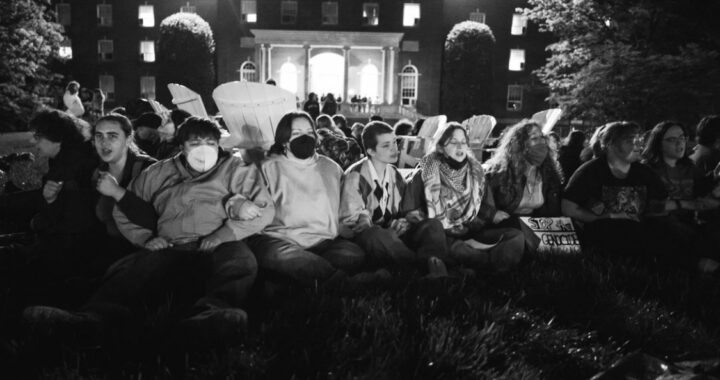Civil Rights Trail markers unveiled at UMW
3 min read
James Farmer Hall is the fourth stop of the new Civil Rights Trail Markers added to campus | Abbey Magnet, The Weekly Ringer
by SOPHIA TOMPKINS
Staff Writer
This summer, five new Civil Rights Trail markers were unveiled on the UMW campus. These markers showcase several stories from Fredericksburg residents and notable UMW alumni and faculty. The project was coordinated by Chris Williams, assistant director of the James Farmer Multicultural Center, and Victoria Matthews, tourism stadium and sales manager of the Fredericksburg Economic Development and Tourism.
The Trail highlights important places and figures from the civil rights movement in Fredericksburg. According to the Trail’s website, there are currently 21 markers and updates will be added as more stories are discovered.
“[The markers] represent UMW’s embrace of and contributions to the city’s efforts to tell a more complete version of Fredericksburg’s history. It is very, very rare to have a university campus included as part of a heritage trail,” said Steve Hanna, a professor of geography at UMW.
The first stop, located outside of Combs Hall, memorializes Venus Jones, the first Black UMW graduate; The second stop commemorates James Farmer’s contributions as a UMW history professor and civil rights activist and is located by his bust outside of James Farmer Hall.
“These five wayside panels really tell a comprehensive story of campus desegregation,” said Williams. “Finding out [about] the barrier breakers, people like Dr. Farmer, some of the first Black students and Black organizations that were here on this campus…All of these people have contributed to the rich history of this campus.”
The third stop can be found outside of the James Farmer Multicultural Center, which strives “to provide the highest quality of programs and services to embrace multicultural education and cultivate cultural learning and appreciation, as well as nurture an atmosphere of inclusion and positive social change,” according to the Center’s mission statement.
Stop four is located at Monroe Hall, UMW’s oldest academic building and home of several departments such as political science and sociology.
“These five markers make the Mary Washington tour stops visible on the landscape for students, staff, faculty, alumni, and visitors,” said Hanna. “While the online version to the trail contains more details and maps out the full route, placing waysides on campus ensures that stories of Mary Washington students and staff from the 1960s-1990s can be seen by everyone, including people who don’t know about the trail.”
Morgan Lewellen, a senior international affairs and women’s, gender and sexuality studies double major, shared her thoughts on activist works being presented to the community.
“Having the honor of Dr. Farmer’s work along with other legendary activists enshrined in another way here in Fredericksburg and at UMW on such a national level is truly something to behold,” said Lewellen.
Hanna echoes Lewellen’s excitement and believes that the visibility of the markers is beneficial for the campus community and visitors alike.
“We wanted to make it clear that young Black women led the effort to desegregate Mary Washington and that, ever since, certain students, staff, and faculty have worked very hard to make our university more welcoming for all students – an effort that continues to this day,” he said.
Lewellen recalls discussing Farmer’s legacy with Williams and feeling inspired by his passion and enthusiasm.
“I remember the first time I met Mr. Williams, he talked about how he knew Dr. Farmer as a young man and put his heart and soul into the project,” said Lewellen.
Williams grew up in Fredericksburg and was involved in the James Farmer Scholars program as a high school student in the 1990s.
“My hope is that when students walk this campus, they understand that contributions of African Americans have only enriched the story of Mary Washington,” said Williams.
Hanna reflects on the progress made by those featured on the Civil Rights Trail and encourages future generations to build off of that work.
“It requires activism, building relationships and networks, dealing with failure, and perseverance,” he said. “It requires present and future generations to learn from and build upon the efforts of those who have gone before us.”


